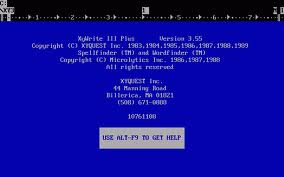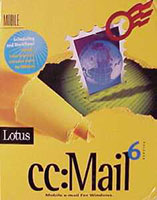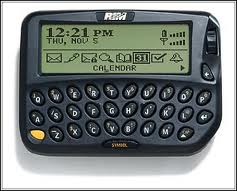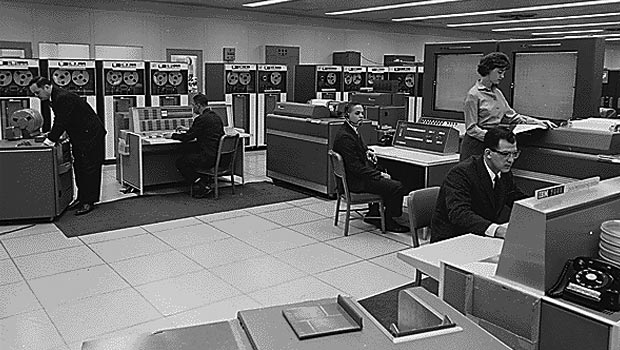I got into computers because I was fascinated by a friend’s programming manual. It was at the University of Michigan, probably in early 1966, when I had my first look at The MAD Manual, a beguiling guide to the Michigan Algorithm Decoder that borrowed from both Mad magazine and Alice in Wonderland. I was hooked, got a student account, and taught myself to program, which in those days meant pounding out your code on an IBM 026 keypunch, turning in your program deck, and getting output in a day or so.
MAD, a derivative of the now largely forgotten Algol language, was uncommonly elegant and powerful for its day. But the IBM 7090 mainframe on which it ran was soon replaced by a monster System/360-67. It came with time-sharing terminals, but no MAD, so we all had to learn Fortran IV and some 360 Assembler. (Bonus question: What was a Green Card? Hint: It had nothing to do with immigration law.) By then I was working on a thesis that used a big data set and while we had access to lots of canned subroutines to do data analysis (the collection became SPSS), you had to write the code to glue them together and handle input and output. I became a programmer–not a terribly good one–in spite of myself.
 After graduating from college, I mostly left computers aside for a few years. Journalists in those days wrote on typewriters–manuals, mostly. Editors cut and pasted, literally, with scissors and rubber cement, then sent their copy off to typesetting or gave it to a Teletype operator for transmission. But in 1979 or ’80, I played with an Apple ][ at a friend’s house and knew I had to have one. I didn’t know what I might do with it, but I knew I needed one. I got an Apple ][+ with a monochrome monitor and two floppy drives . One of the first things I did with it was the “shift-key mod,” jumpering a pin on the keyboard connector to a pin on a chip on the motherboard; this allowed the Apple to type and display lower-case letters.
After graduating from college, I mostly left computers aside for a few years. Journalists in those days wrote on typewriters–manuals, mostly. Editors cut and pasted, literally, with scissors and rubber cement, then sent their copy off to typesetting or gave it to a Teletype operator for transmission. But in 1979 or ’80, I played with an Apple ][ at a friend’s house and knew I had to have one. I didn’t know what I might do with it, but I knew I needed one. I got an Apple ][+ with a monochrome monitor and two floppy drives . One of the first things I did with it was the “shift-key mod,” jumpering a pin on the keyboard connector to a pin on a chip on the motherboard; this allowed the Apple to type and display lower-case letters.
I spent many happy hours with my ][+; I mastered Zork, my kids learned to program on it, and it was the only computer I ever understood at a deep level. For some reason, I still remember that you generated a beep from the internal speaker by writing to memory location 2030, and you could make a kind of music by controlling the frequency of POKEs. By the mid 80s, I was doing most work-related stuff on an MS-DOS machine, but through many successor PCs and Macs, I never lost my affection for that original Apple. For me, the personal computer has never again been as personal.
 By the mid 1980s, BusinessWeek‘s New York editorial operations were running on a VAX-based Atex system but bureaus were still using typewriters. The time had come to computerize. We had no IT staff resident in Washington. I didn’t know much, but I knew more than anyone else, so the job of supervising setup of the computers and installation of a local area network fell to me. We used proprietary 3Com networking software and servers. But the key tool was XyWrite, a DOS text word processor created by folks from Atex. It was by far the most advanced word processor of its time, fast, flexible, and powerful. It was ideally suited to the needs of the publishing industry and let us mimic many of the functions of the expensive Atex system on cheap hardware. XyWrite was amazingly customizable. An acquaintance created a XyWrite template that could be used to create weaving drafts for setting up looms. Internally, we customized it to the point where a story in XyWrite could be fit against a magazine layout.
By the mid 1980s, BusinessWeek‘s New York editorial operations were running on a VAX-based Atex system but bureaus were still using typewriters. The time had come to computerize. We had no IT staff resident in Washington. I didn’t know much, but I knew more than anyone else, so the job of supervising setup of the computers and installation of a local area network fell to me. We used proprietary 3Com networking software and servers. But the key tool was XyWrite, a DOS text word processor created by folks from Atex. It was by far the most advanced word processor of its time, fast, flexible, and powerful. It was ideally suited to the needs of the publishing industry and let us mimic many of the functions of the expensive Atex system on cheap hardware. XyWrite was amazingly customizable. An acquaintance created a XyWrite template that could be used to create weaving drafts for setting up looms. Internally, we customized it to the point where a story in XyWrite could be fit against a magazine layout.
The big problem was that our LAN in Washington had no way to communicate properly with the Atex system in New York. We could send files into the system and they sent output back to our printers. The two systems communicated, such as it was, using custom software and hardware created by a company that had long since disappeared. No one knew quite how it worked and we just had to treat it as a black box. The crowning achievement of my career as a developer was overseeing creation of a program that solved the communication program that made our LAN look like a single teletype machine. Incoming messages were received by a server, parsed for addresses (four-character Teletype codes), and in addition to being printed, were directed to the inboxes of recipients on our 3Com local-only mail system. It was a hideous kludge, but it worked and was used for several years.
 In time, we moved to a real email program, cc:Mail, that not only linked all our offices but provided gateways that connected us to the world. I had been using MCI Mail and CompuServe mail for some time, but cc:Mail (later acquired by Lotus) was a huge breakthrough. Without the help or, indeed, the knowledge of our corporate IT folks, we set up an internet connection with a small local ISP and an SMTP gateway. (I also registered the domain mh.com. It’s still owned by McGraw-Hill, but inactive. The ought to sell it–two-letter .com domains are worth something.) Email quickly went from being a better way to send messages internally to a primary way of doing business. Our network also gave us very early access to the rest of the internet, including the nascent World Wide Web, though it was some years before that became very useful.
In time, we moved to a real email program, cc:Mail, that not only linked all our offices but provided gateways that connected us to the world. I had been using MCI Mail and CompuServe mail for some time, but cc:Mail (later acquired by Lotus) was a huge breakthrough. Without the help or, indeed, the knowledge of our corporate IT folks, we set up an internet connection with a small local ISP and an SMTP gateway. (I also registered the domain mh.com. It’s still owned by McGraw-Hill, but inactive. The ought to sell it–two-letter .com domains are worth something.) Email quickly went from being a better way to send messages internally to a primary way of doing business. Our network also gave us very early access to the rest of the internet, including the nascent World Wide Web, though it was some years before that became very useful.
In 1994, I gave up managing this stuff (as a sideline to my day job as deputy bureau chief) and took up writing about technology full time. Finally what had been more or less a hobby for nearly 30 years became my occupation. It was a time of tremendous change in the personal technology business, which was just on the cusp of moving from early adopters to a true mass market. (My very first “Technology & You” column took a look at the updates Apple Newton MessagePad 110 and a would-be competitor called the Motorola Envoy. I presciently predicted that such devices required reliable, reasonably fast wireless communications to be useful. Less prescient was my belief that the Magic Cap operating system that powered the Envoy had a future.)
I all my years reviewing devices, there were very few products that I believed at first glance would really change the game. One turned up in early 1996, when Ed Colligan stopped by my office with an early production unit of the Palm Pilot. Those first Palms had no wireless communications, but the computer sync (over an RS-232 serial cable!) was, for its time, a masterpiece of simplicity, as was the device itself. It was a very Apple-esque design–many of the Palm folks had deep roots in the Apple world–and it set the standard for what Apple would accomplish a decade later with the iPhone and iPad.
 The second came in 1999, when Mike Lazaridis showed up with the first BlackBerry. It was basically a two-way pager–it ran on a paging network–that differed from existing devices in two critical ways: It had a tiny, curved keyboard that you could actually type on with reasonable speed. And it had a network back end that reliably and securely exchanged mail with corporate servers. The BlackBerry, probably more than any other device, changed the way I and millions of others worked. It meant that for better or worse, if you had network coverage–and the coverage of that slow pager network was in many ways more ubiquitous than today’s 3G and 4G networks–you were in the office. At a time when remote access to corporate networks from a laptop was a very iffy thing, this anytime, anywhere connectivity was a huge breakthrough.
The second came in 1999, when Mike Lazaridis showed up with the first BlackBerry. It was basically a two-way pager–it ran on a paging network–that differed from existing devices in two critical ways: It had a tiny, curved keyboard that you could actually type on with reasonable speed. And it had a network back end that reliably and securely exchanged mail with corporate servers. The BlackBerry, probably more than any other device, changed the way I and millions of others worked. It meant that for better or worse, if you had network coverage–and the coverage of that slow pager network was in many ways more ubiquitous than today’s 3G and 4G networks–you were in the office. At a time when remote access to corporate networks from a laptop was a very iffy thing, this anytime, anywhere connectivity was a huge breakthrough.
The last few years in tech have really been wonderful ones, but I have been saddened by the demise of Palm and the decline of Research In Motion. These are companies that produced products that changed my life, and the world.

